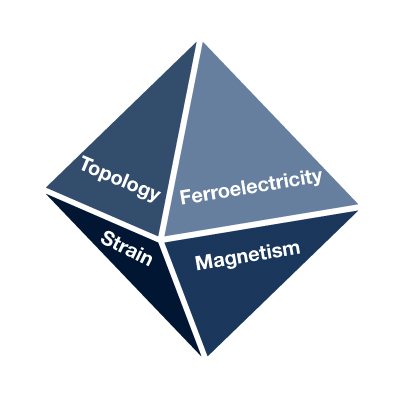Research interests
 The Computational Material Design group is combining the properties of materials to enhance or create new physical phenomena. The versatility of multiferroics, that combine ferroelectricity, magnetism and deformation, is an ideal playground. In this family of material, those combining ferroelectricity and magnetism, so-called magneto-electrics, are of particular interest for technological application.
The Computational Material Design group is combining the properties of materials to enhance or create new physical phenomena. The versatility of multiferroics, that combine ferroelectricity, magnetism and deformation, is an ideal playground. In this family of material, those combining ferroelectricity and magnetism, so-called magneto-electrics, are of particular interest for technological application.
Our strength is based on the ability to study both the equilibrium and out-of-equilibrium properties of multiferroics. We focus on the non-collinear states of matter, such as magnetic skyrmions and spin spirals or magneto-electric domain walls, in which both equilibrium and non-equilibrium properties are intimately connected.
Methods
Our approach is based on density functional theory (DFT) to understand the fundamental properties of materials such as ferroelectric polarization, magnetic couplings, transport properties and their interplay. Due to its high computational cost, DFT is limited to the study of several tens of atoms at 0 Kelvin. In order to reach the experimental temperatures and length scales, we map our DFT results onto Hamiltonians which are then solved via Monte-Carlo or spin dynamics simulations.
Therefore, the Computational Materials Design subgroup is composed of experts from several fields who can cover a broad range of materials, length and temperature scales. We use several DFT packages such as the FLEUR (FLAPW basis) and VASP (PAW basis) ab initio packages.
Collaborations
We benefit from the expertise of colleagues via close collaborations:
- with the group of Quantum Theory of materials in FZJuelich (Germany) and particularly the group of Jun. Prof. Y. Mokrousov Topological Nanoelectronics Group.
